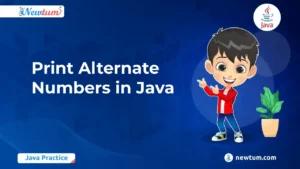Python list comprehension even numbers might sound like a mouthful, but don’t worry – we’re here to break it down for you! If you’ve ever wanted to make your code clean, efficient, and easy to read, understanding list comprehensions is your ticket. Whether you’re a beginner or looking to sharpen your skills, exploring how to filter even numbers using this powerful tool is a great place to start. So, grab a cup of tea and let’s dive into the world of Python with ease.
What Is List Comprehension in Python?
Definition and Syntax
List comprehension is a short and elegant way to create lists in Python. Instead of using multiple lines of code with loops, you can create a new list in just a single line.
Basic Syntax:
[expression for item in iterable if condition]
expression– what you want to store in the listitem– each element in the loopiterable– the collection you’re looping through (like a list or range)if condition– an optional filter to include only specific items
Traditional Loop vs. List Comprehension
Let’s say you want to create a list of squares of numbers from 1 to 5.
Using a traditional for loop:
squares = []
for x in range(1, 6):
squares.append(x * x)
Using list comprehension:
squares = [x * x for x in range(1, 6)]
Both produce the same result: [1, 4, 9, 16, 25], but list comprehension is shorter and easier to read.
Benefits of Using List Comprehension
- Speed: Python processes list comprehensions faster than traditional loops.
- Readability: The code is more compact and cleaner.
- Less Code: Fewer lines mean less chance of making mistakes.
- Pythonic Style: It’s the preferred way of writing lists in modern Python.
Generating Even Numbers Using List Comprehension
Want to quickly generate even numbers between 1 and 20? Python list comprehension makes it super easy and clean. Let’s look at the code:
even_numbers = [x for x in range(1, 21) if x % 2 == 0]
print(even_numbers)
Breaking Down the Code
Let’s understand this line by line:
x for x in range(1, 21)→ This part loops through numbers from 1 to 20.if x % 2 == 0→ This condition filters only even numbers. The%operator checks if a number is divisible by 2.[ ... ]→ This creates a new list with only the even numbers.
Output:
[2, 4, 6, 8, 10, 12, 14, 16, 18, 20]
Nice and clean, right?
Traditional For Loop Method
Here’s how you’d do the same thing with a regular for loop:
pythonCopyEditeven_numbers = []
for x in range(1, 21):
if x % 2 == 0:
even_numbers.append(x)
print(even_numbers)
Result:
The output will be the same — but the code is longer and a bit harder to read at first glance.
Comparison – Why List Comprehension is Better
| Feature | Traditional For Loop | List Comprehension |
|---|---|---|
| Lines of Code | 4 | 1 |
| Readability | Medium | High |
| Speed | Slightly slower | Faster (Python-optimized) |
| Pythonic Style | Less | More |
So, if you want shorter, cleaner, and faster code — list comprehension is the way to go!
Our AI-powered python online compiler lets users instantly write, run, and test their Python code with incredible ease. With AI at your fingertips, there’s no waiting around. Dive right into coding, and watch your ideas come alive in real-time, enhancing both learning and productivity.
Use Cases of Even Number Lists in Real Life
List comprehension isn’t just for fun — it’s powerful and used in real projects. Here’s how generating even numbers can be useful:
1️⃣ Data Filtering
When working with large datasets, you might only want to work with even values. List comprehension helps filter those numbers quickly and efficiently.
Example:
You have a list of user IDs, and you want to send a message only to users with even IDs.
2️⃣ Algorithm Problems
Even numbers are common in coding challenges — whether you’re dealing with sequences, patterns, or condition-based logic.
Example:
Find the sum of all even numbers in a range — list comprehension makes it super simple.
3️⃣ Machine Learning Preprocessing
Sometimes, data cleanup or feature engineering requires filtering numbers. If even values are more relevant, you can extract them in one line using list comprehension.
Common Mistakes to Avoid
Even though list comprehension is simple, beginners can trip up on a few things. Here are some mistakes to watch out for:
1. Forgetting the Condition if x % 2 == 0
Without the condition, you’ll get all numbers — not just even ones!
# Wrong numbers = [x for x in range(1, 21)] # No filtering here # Correct even_numbers = [x for x in range(1, 21) if x % 2 == 0]
2. Using the Wrong Range
Remember, range(1, 21) gives you numbers from 1 to 20. If you write range(1, 20), you’ll miss 20.
3. Misunderstanding the Structure
Sometimes beginners reverse the order of elements or misuse conditions. Just follow the pattern:
[expression for item in iterable if condition]
Interview Questions You Might Face
If you’re preparing for interviews or coding rounds, list comprehension often comes up. Be ready for these types of questions:
1. How to generate even/odd number lists using list comprehension?
Answer:
even = [x for x in range(10) if x % 2 == 0] odd = [x for x in range(10) if x % 2 != 0]
2. What’s the difference between list comprehension and map/filter?
Answer:
list comprehensionis more readable and combines mapping + filtering in one line.map()applies a function to all elements, whilefilter()selects elements based on a condition.
3. Code Output-Based Questions
Example:
print([x for x in range(1, 10) if x % 2 == 0])
Expected Output:[2, 4, 6, 8]
Conclusion
Learning ‘Python list comprehension even numbers’ is incredibly rewarding, offering a powerful way to simplify code and make it more readable. By mastering it, you’ll boost your problem-solving skills. Why not give it a go? Explore more programming languages like Java and C on Newtum.
Edited and Compiled by
This article was compiled and edited by @rasikadeshpande, who has over 4 years of experience in writing. She’s passionate about helping beginners understand technical topics in a more interactive way.



